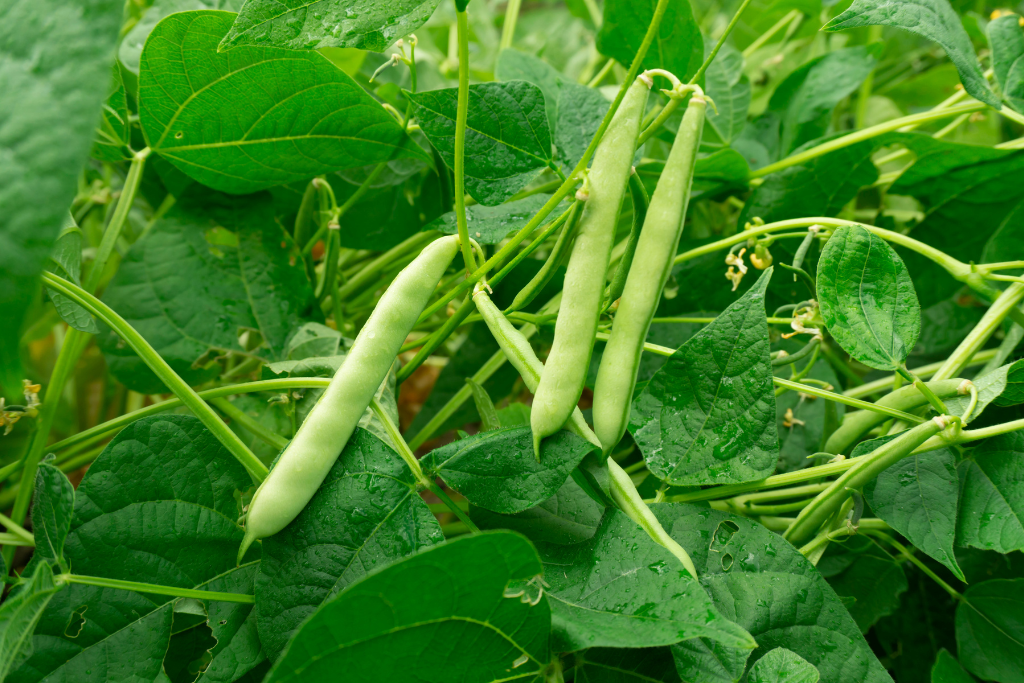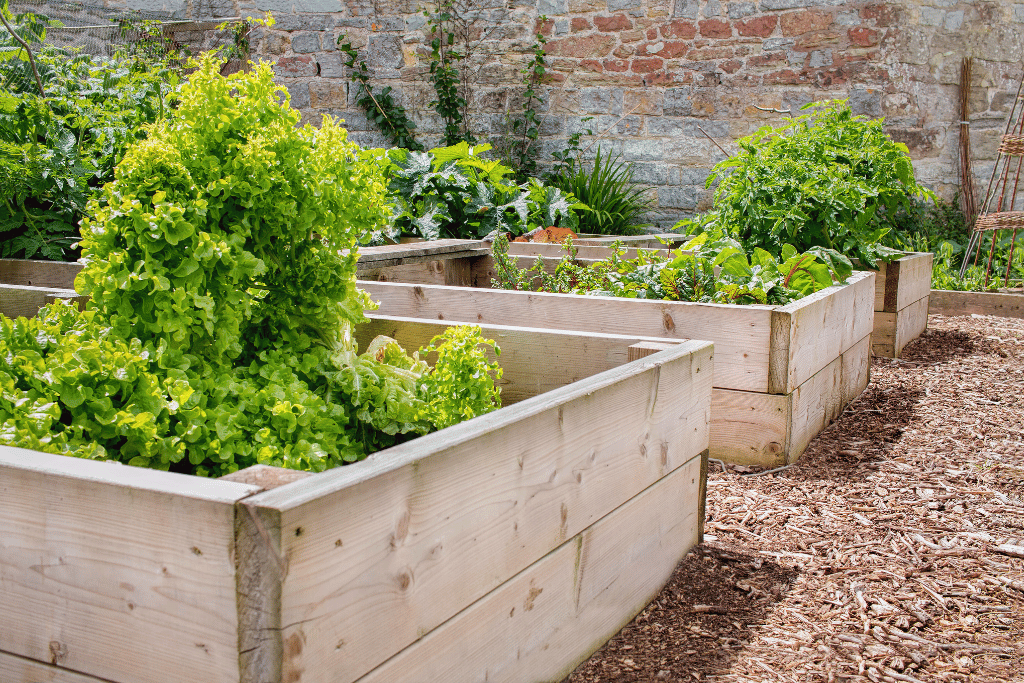Welcome to the fascinating world of sage plants! Have you ever wondered why this fragrant herb is so popular among gardeners, cooks, and healers alike? Well, I can tell you it’s not just because of its lovely aroma and delicate flavor. Sage has a rich history and a myriad of uses that make it a valuable addition to any home or garden.
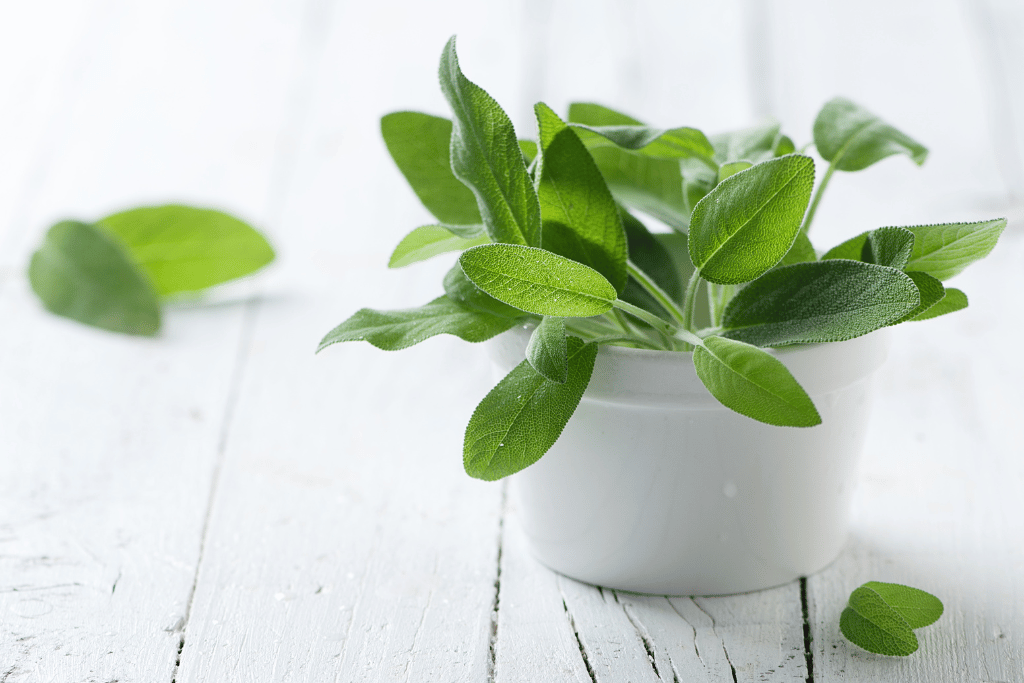
Sage’s scent is heavenly and can transport you to a field of wildflowers on a sunny day. Besides being a natural air freshener, Sage has been used for centuries in traditional medicine for its anti-inflammatory, antimicrobial, and antioxidant properties. It’s no wonder it’s often referred to as the miracle herb.
Last year I planted sage as a companion plant alongside other crops to repel pests and attract beneficial insects. It has done wonders for keeping the little critters away, and because of its low-growth habit and attractive foliage, it makes an excellent hedge or border plant.
By the end of this article, you’ll be a full bottle on sage varieties!
White Sage
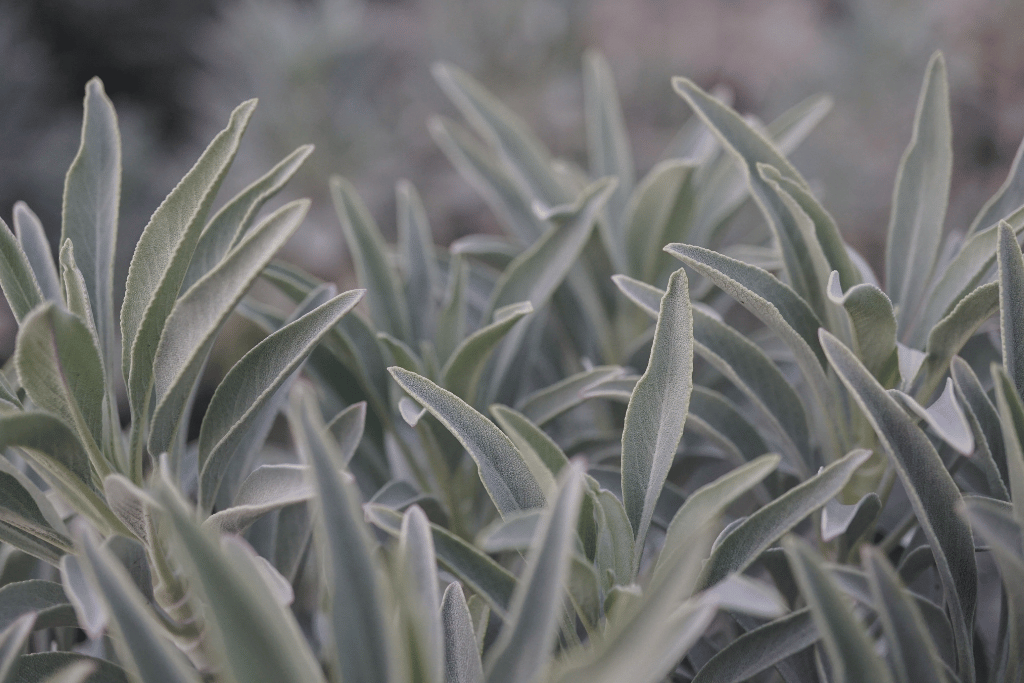
White sage is a plant with silvery grey leaves and an intense aroma that is native to the southwestern United States and Northwestern Mexico.
The leaves are used for smudging, a spiritual practice that involves burning herbs to cleanse the energy of a space or person. The Native Americans believed that burning the herb would ward off evil spirits, purify the air and promote healing.
Cultivating white sage requires specific conditions, such as sandy soil, full sun exposure, and low water usage. You can multiply your White sage plants by propagation through seeds or stem cuttings.
However, due to its popularity, White sage is often over-harvested, leading to concerns about sustainability. White sage is now considered a threatened species, and conservation efforts are necessary to protect it. Sustainable practices such as cultivation and controlled harvesting can help ensure that white sage remains available for future generations.
The uses and benefits of White sage are plentiful. It is also used in aromatherapy and as a culinary herb to flavor dishes.
Furthermore, white sage has been shown to have antibacterial and anti-inflammatory properties, making it a potential natural remedy for various ailments.
After joining a yoga retreat in Thailand one year, I witnessed the popularity of this spiritual herb. We often burn white sage before meditation or mindful practices to help us focus and center our energy.
| Scientific Name | Salvia apiana |
| Common Name | White Sage |
| Size | 4 feet Tall and 4 feet Wide, With woody stems and long, narrow leaves |
| Origin | Southwestern United States and Northwestern Mexico |
| Family | Lamiaceae |
| USDA Hardiness Zone | Zones 8 to 11, which are regions with minimum temperatures 10 – 50F |
| Temperature | 60-80F |
| Humidity | 20-60% |
| Soil | Well-draining Sandy soil with a pH between 6.5 and 8.0 |
| Light | Full Sun for at least 6 hours per day |
| Fertilizer | Balanced, slow release fertilizer applied in the spring |
Sage Plants with Yellow Flowers

Sage plants with yellow flowers are a beautiful and unique variety of sage. They are characterized by their yellow blooms, which can range from pale yellow to vibrant golden hues. The leaves of these plants are typically green and can vary in size and shape depending on the type.
Several types of sage plants with yellow flowers include pineapple sage, golden sage, and honeydew sage. Each variety has its own unique characteristics, such as pineapple sage’s fruity aroma and golden sage’s silver-grey foliage.
The cultivation and propagation of sage plants with yellow flowers are similar to other sage varieties. They prefer well-draining soil, full sun exposure, and moderate water usage. Propagation can be done through seeds or stem cuttings, depending on the plant.
Sage plants with yellow flowers have various uses and benefits, such as culinary seasoning, aromatherapy, and medicinal properties. Golden sage, for instance, has antiseptic and anti-inflammatory properties, making it helpful in treating minor wounds and skin irritations. Pineapple sage’s fruity aroma can also be calming, making it popular for aromatherapy.
As with white sage, sustainability and conservation are essential for sage plants with yellow flowers. Overharvesting and habitat destruction can threaten the survival of these beautiful plants, making it crucial to use sustainable practices and protect their natural habitats.
I love plants that have multiple functions, especially when it comes to herbs. I recently added some Golden sage to my garden. When they’re in full bloom, they add a gentle splash of color and a beautiful scent to my garden. On top of their aesthetic appeal, they are great to have on hand for adding to my kitchen creations.
Other Varieties of Sage Plants
Sage is a versatile plant with many different varieties, each with particular characteristics and uses.
There are some other exciting types of sage plants that you should consider.
Purple Sage

This variety of sage has beautiful purple leaves and is known for its robust flavor. It’s a popular herb in Mediterranean cuisine and is perfect for adding color to your herb garden.
| Scientific Name | Salvia officinalis Purpurascens |
| Common Name | Purple Sage |
| Size | 2-3 feet tall and wide, with woody stems and oblong leaves that are purple in color |
| Origin | Cultivar of common sage (Salvia officinalis) and is believed to have originated in the Mediterranean region |
| Family | Lamiaceae |
| USDA Hardiness Zone | 5-9, which are regions with temperatures between -20 and 20F |
| Temperature | 60-80F |
| Humidity | 40-60% |
| Soil | Well draining, slightly alkaline soil with a pH between 6.0 and 7.5 |
| Light | Full sun at least 6 hours of direct sun per day |
| Fertilizer | Benefits from a balanced, slow release fertilizer applied in the spring |
Clary Sage

Clary sage is another type of sage with a distinctive scent. Its leaves and oil are commonly used in aromatherapy to reduce stress and anxiety. It’s also a popular ingredient in natural beauty products.
| Scientific Name | Salvia sclarea |
| Common Name | Clary Sage |
| Size | 3- 4 feet tall and wide, with sturdy stems and large, hairy heart-shaped leaves. |
| Origin | Native to the Mediterranean but now cultivated worldwide |
| Family | Lamiaceae |
| USDA Hardiness Zone | 5-9 which are regions with minimum temperatures -20 and 20F |
| Temperature | 60-75F |
| Humidity | 50-70% |
| Soil | Well-drained, fertile soil with a pH between 6.0 and 8.0 |
| Light | Full sun to part shade for optimal growth, at least 4-6 hours of direct sunlight per day |
| Fertilizer | Balanced, organic fertilizer in the spring |
Desert Sage

This variety of sage is native to arid regions and known for its silvery-gray leaves and sweet scent. Its often used in Native American smudging ceremonies to purify and cleanse the energy of a space
| Scientific Name | Salvia dorrii |
| Common Name | Desert Sage |
| Size | 3-4 feet tall and wide, with woody stems and small, grayish-green leaves |
| Origin | Desert Sage is native to the southwestern United States and Northern Mexico |
| Family | Lamiaceae |
| USDA Hardiness Zone | 5-10 which are regions with minimum temperatures -20 and 30F |
| Temperature | 60-90F |
| Humidity | 10-30% |
| Soil | Well-drained, sandy soil with pH 6.0 and 8.0 |
| Light | Full sun 6 hours of direct sunlight daily |
| Fertilizer | Balanced, slow-release fertilizer applied in spring |
Mexican Sage

Mexican sage is a beautiful ornamental plant with purple flowers that bloom in the fall. It’s a popular choice for landscaping and is known for attracting pollinators such as bees and butterflies.
| Scientific Name | Salvia leucantha |
| Common Name | Mexican Sage, Velvet Sage |
| Size | 3-4 feet tall and wide, with soft, velvety stems and leaves and long spikes of purple-white flowers |
| Origin | Mexican Sage is native to Mexico and Central America |
| Family | Lamiaceae |
| USDA Hardiness Zone | 8-11, which are regions with minimum temperatures between 10 and 50F |
| Temperature | 60-85F |
| Humidity | 40-70% |
| Soil | Well-draining, fertile soil with a pH 6.0 and 7.5 |
| Light | Full sun, at least 6 hours of direct sunlight per day |
| Fertilizer | Balanced, slow-release fertilizer applied in spring |
Russian Sage

Russian sage is a hardy plant with lavender-blue flowers that bloom in the summer. It’s perfect for adding height to your garden and is resistant to deer and rabbit damage.
| Scientific Name | Perovskia atriplicifolia |
| Common Name | Russian Sage |
| Size | 3-5 feet tall and wide, with woody stems and finely divided, silvery-green leaves |
| Origin | Western and Central Asia |
| Family | Lamiaceae |
| USDA Hardiness Zone | 5-9 which are regions with minimum temperatures between -20 and 20F |
| Temperature | 60-80F |
| Humidity | 30-50% |
| Soil | Well-drained, sandy soil with a pH 6.0 and 8.0 |
| Light | Full Sun, at least 6 hours of direct sunlight per day |
| Fertilizer | Balanced, slow release fertilizer applied in spring |
Berggarten Sage
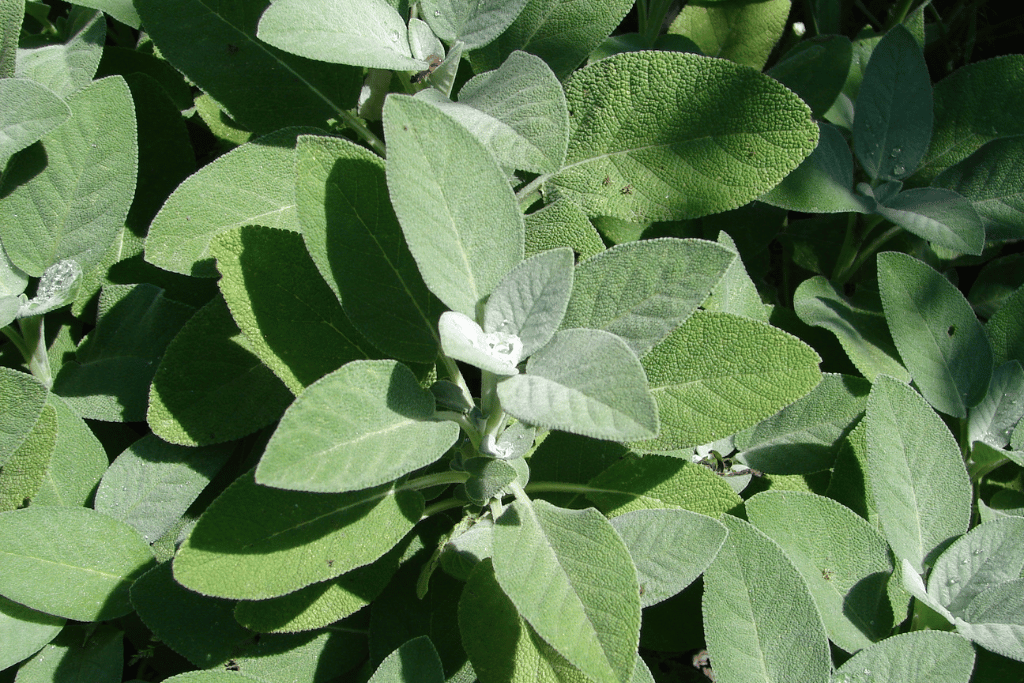
Berggarten sage is a culinary herb with a strong, savory flavor. Its leaves are larger than other sage varieties, making it an excellent choice for cooking.
| Scientific Name | Salvia officinalis Berggarten |
| Common Name | Berggaten Sage |
| Size | 1-2 feet tall and wide, with large, rounded leaves that are gray-green color |
| Origin | Cultivar of common sage (Salvia officinalis and is believed to have originated in the Mediterranean region |
| Family | Lamiaceae |
| USDA Hardiness Zone | 5-9 which are regions with minimum temperatures regions -20 and 20 F |
| Temperature | 60-75F |
| Humidity | 40-60% |
| Soil | Well drained, loaming with a pH between 6.0 and 7.0 |
| Light | Full sun-at least 6 hours of direct sunlight per day. |
| Fertilizer | Balanced, slow-release fertilizer applied in spring |
Tricolor Sage

Tricolor sage is a beautiful plant with variegated leaves of purple, green, and white. It’s a popular ornamental plant and is perfect for adding color to your herb garden or landscaping.
| Scientific Name | Salvia officinalis Tricolor |
| Common Name | Tricolor Sage |
| Size | 1-2 Feet tall and wide, with small variegated leaves that are green, white, and purple in color |
| Origin | A cultivar of common sage (Salvia officinalis) and is believed to have originated in the Mediterranean region |
| Family | Lamiaceae |
| USDA Hardiness Zone | 5-9 which are regions with minimum temperatures between -20 and 20 F |
| Temperature | 60-75F |
| Humidity | 40-60% |
| Soil | Well draining loamy soil, with a pH between 6.0 and 7.0 |
| Light | Full sun- at least 6 hours of direct sunlight per day. |
| Fertilizer | Balanced, slow-release fertilizer applied in the spring |
Uses and Benefits of Different Types of Sage Plants

Sage plants are not only beautiful and fragrant, but they also have a number of uses and benefits that make them a staple in many households.
Let’s explore some of the ways that different types of sage plants can be used:
Medicinal Properties
Many varieties of sage have medicinal properties that have been used for centuries. For example, white sage has antibacterial and anti-inflammatory properties, while clary sage has been used to treat menstrual cramps and digestive issues. Mexican sage is believed to have anti-anxiety and anti-depressant effects, making it a potential natural remedy for mental health concerns.
Culinary Uses
Sage is a popular herb used in cooking, particularly in Mediterranean cuisine. Purple sage, with its vibrant color, is a beautiful addition to any dish. Pineapple sage, with its fruity aroma, can be used to flavor desserts and drinks. Golden sage has a mild, sweet flavor that pairs well with poultry and pork dishes.
Aromatherapy
The essential oils extracted from sage plants are used in aromatherapy to promote relaxation, reduce anxiety and stress, and improve mood. Russian sage, with its calming scent, is particularly effective in aromatherapy
Spiritual and Religious Practices
Sage plants are used in spiritual and religious rituals across a wide range of cultures and religions. To cleanse a space or a person’s energy, white sage is frequently used in Native American smudging rituals. Some Native American tribes use desert sage as a purifying and healing herb.
Gardening and Landscape
Sage plants are easy to grow and make beautiful additions to any garden or landscape. Berggarten sage, with its compact growth and beautiful foliage, is a great choice for container gardening. Tricolor sage has variegated leaves that add a splash of color to the garden.
I have a small herb garden in my backyard, and I love using different types of sage in my cooking. Purple sage is one of my favorites because of its beautiful color and earthy flavor. I also like to burn white sage in the evenings to wind down after a busy day.
Sage: A Versatile Herb with Countless Varieties and Endless Possibilities
While this is just a small selection of the sage varieties available, you can easily see that their appearance and characteristics vary dramatically.
With so many different uses, from medicinal properties to spiritual practices, it’s no wonder this plant has been overharvested. We must appreciate and respect these plants for their cultural, spiritual, and medicinal significance.
Sage plants are a must-have in the garden. Whether you want to use sage for a traditional ceremony, add it to your favorite recipe, or simply admire its beauty in your garden, take a moment to acknowledge what a remarkable plant sage is.
Need Help Sprouting Your Gardening Skills?
Our website has all the planting hacks you need to cultivate a green thumb and bring your garden to life. From planting to pruning, we’ll guide you every step of the way. So why wait? Seize the spade and start digging in!
Join our community of plant enthusiasts, and let’s get growing! It’s thyme to make your garden bloom!


